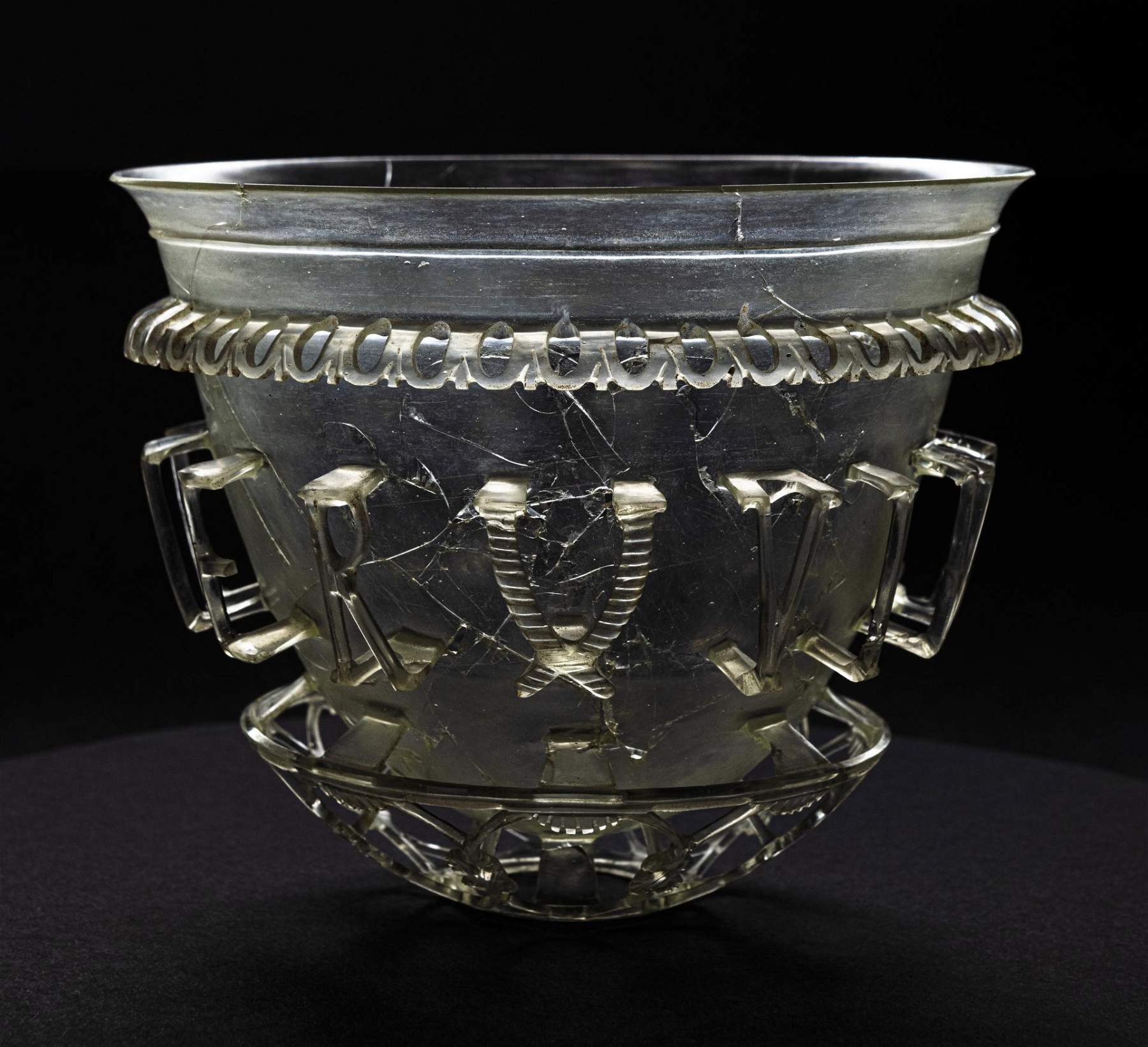France, extremely rare diatreta cup discovered in 2020 reveals its secrets
It had been discovered and presented to the press in November 2020: now the diatrete pair found in Autun, France, reveals its secrets following studies on this rare object by archaeologists. The diatreta cup is the most prized glass vessel of Roman production: a luxurious object, it became widespread around the fourth century and consisted of a glass container and a very elaborate decorative outer shell attached to the container through some supports. Only about fifty specimens of such objects are known, and very few are complete.
The cup discovered in France was found, as mentioned, in November 2020: it emerged from the excavation of a necropolis in the ancient early Christian settlement church of Saint-Pierre-l’Estrier, and the cup was inside a stone sarcophagus. It was found in fragments, but it is a complete specimen: dated from the outset to the fourth century AD, it was then handed over byInrap - Institute National de Recherches Archéologiques Préventives, to the Römisch-Germanisches Zentralmuseum in Mainz, Germany, which restored and studied it to return it to Autun, where it returned on October 22.




The Autun cup, a very valuable object (15 cm in diameter, 12.6 cm high), was offered to an important person, probably close to imperial power It is slightly tilted to the side and its rim is not perfectly circular. A Latin inscription, which reads “VIVAS FELICITER” (“Live Happily”), is developed on the central band, surmounted by a border decorated with ovals. A filigree web of eight heart-shaped ovals, with a circular rosette, forms the base of the vase. The inscription, composed of large raised letters, finds rare comparisons in the ancient world. The letters, an exceptional circumstance, are very well preserved, with a ribbed arch or “V”-shaped separator marking the end of the sentence. The vase has a surprising flaw: the letter C appears in fact to have been added later. The glass in which this repair is made is chemically identical but visually different in its opaque, almost milky appearance. According to scholars, an accident occurred during the production of the letter: the glass was then melted to replace the C, and this circumstance probably contributed to the unusual appearance and texture of the glass.
This singular object has an additional peculiarity: its contents, which are still present inside, were studied, and analysis revealed a mixture of oils, plants and flowers beyond, and also traces of “ambergris,” a substance produced by the sperm whale’s digestive system, very rare and fragrant, and used since ancient times to create luxury cosmetics. This extremely rare and valuable product, sometimes referred to as sea truffle or whale vomit, is then used for its aromatic and medicinal properties. Aetius of Amida, a Greek physician who lived at the turn of the fifth and sixth centuries, mentions it as a component of a recipe for “nard,” a perfume intended for the church. Analyses performed on the diatrete cup currently make it the oldest archaeological evidence of the use of this very rare substance.
The necropolis where the diatreta cup was found was active from the early 3rd century to the mid-5th century, with most of the graves being from the 4th century. Ancient texts also tell us that the first bishops of Autun were buried in this vast three-hectare burial space. Among the deceased were probably Christians but also individuals of other ancient religions. The stone sarcophagi found at the site contained very few objects, but all were very valuable: gold and purple textiles, amber brooches, gold jewelry. But the most beautiful and singular piece is undoubtedly the diatrete cup.
 |
| France, extremely rare diatreta cup discovered in 2020 reveals its secrets |
Warning: the translation into English of the original Italian article was created using automatic tools. We undertake to review all articles, but we do not guarantee the total absence of inaccuracies in the translation due to the program. You can find the original by clicking on the ITA button. If you find any mistake,please contact us.




























